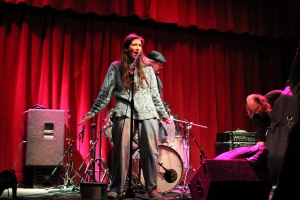Update 4/30: this story has gone around the media in the last 24 hours, and meaningful, positive coverage is streaming in. Maybe New York loves Showtime — is that why the dancers are still there? Join the debate on Twitter under #WarOnShowtime. BuskNYers, let’s give a voice to performers who are popular, who are iconic, and who most of all do not deserve to be saddled with misdemeanor records.
Since the beginning of the ‘subway crackdown‘ this year, arrests of performers on trains have skyrocketed. Some of these arrests have occurred to musicians, and in one case, even to clowns charged with offering nuts to riders. But the brunt of the arrests have targeted one of the most vulnerable groups in the subway: train dancers.
Official numbers have recently come in, and they are bleak. According to a New York Post report, 46 performers have been arrested. Worse, those performers — all 46 — have been charged not with a violation of the MTA Rules, but with reckless endangerment.
Are these dancers in fact reckless hooligans? Far from it. It’s clear that train performers view their work as positive: they highlight that dancing has given them opportunities for success, and that they engage subway riders with optimism and enthusiasm. What’s more, dancers’ broad support among riders is reflected — even if the MTA pays no heed to this statistic — in the outpouring of contributions they receive.
Nonetheless, under Bratton’s explicit directions against dancers, the NYPD has taken the shortest route to criminalization. Ignoring MTA guidelines entirely, police have charged all 46 with misdemeanor reckless endangerment rather than an MTA violation, citing the narrow distance between their performance and subway riders.
In light of the NYPD’s close focus on this art form, two questions should be raised. First, why have the police targeted, among all other subway entertainment, the tradition most practiced by young minority men? Is it possible that the crackdown is coming from the “new system where the MTA shares riders’ complaints with the police,” as reported by the Post? The implication is that Bratton’s subway policy is driven, not by a rational understanding of public safety, but by a witchhunt against those performers perceived to be ‘most annoying.’ If those subway riders most likely to file official MTA complaints also happen to be opposed to manifestations of popular culture, it seems that the police won’t hesitate to assuage their worries, even if it means creating 46 criminal records.
Second, what can explain the decision to charge these performers with misdemeanor reckless endangerment? Was it not appropriate to charge them, far more cogently, with a violation of MTA rules? In the stark absence of actual evidence of dancers causing accidents, the highly theoretical choice of reckless endangerment means the NYPD believes this tradition to be so strong that it requires special means. And for once, they’re right. Summonses alone cannot stop one of the longest-running and most emblematic forms of artistic expression in the MTA.

NYC may diss its train performers often, but it loves them too. That’s why they’re there: they’re popular. That the NYPD has chosen to escalate the fight against artistic performance into a sustained campaign of misdemeanor charges speaks to an attitude that has given up on community policing long ago. And that means the fight isn’t lost yet.






You must be logged in to post a comment.